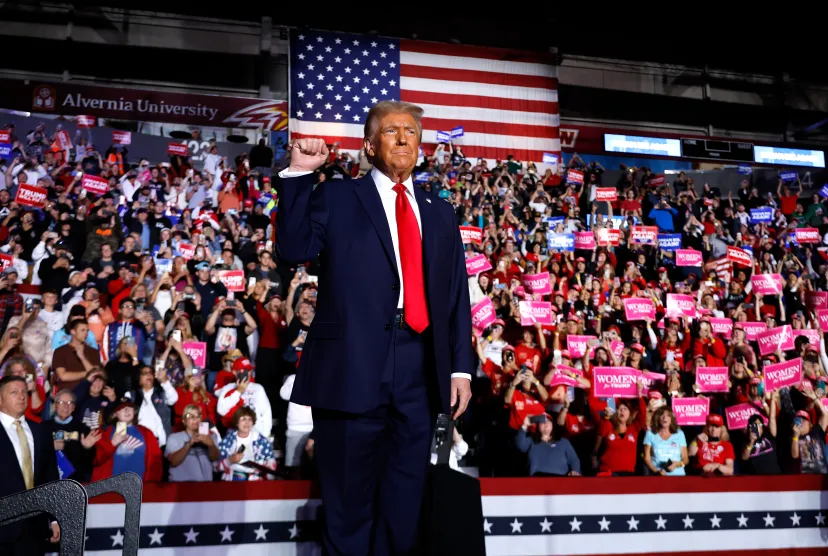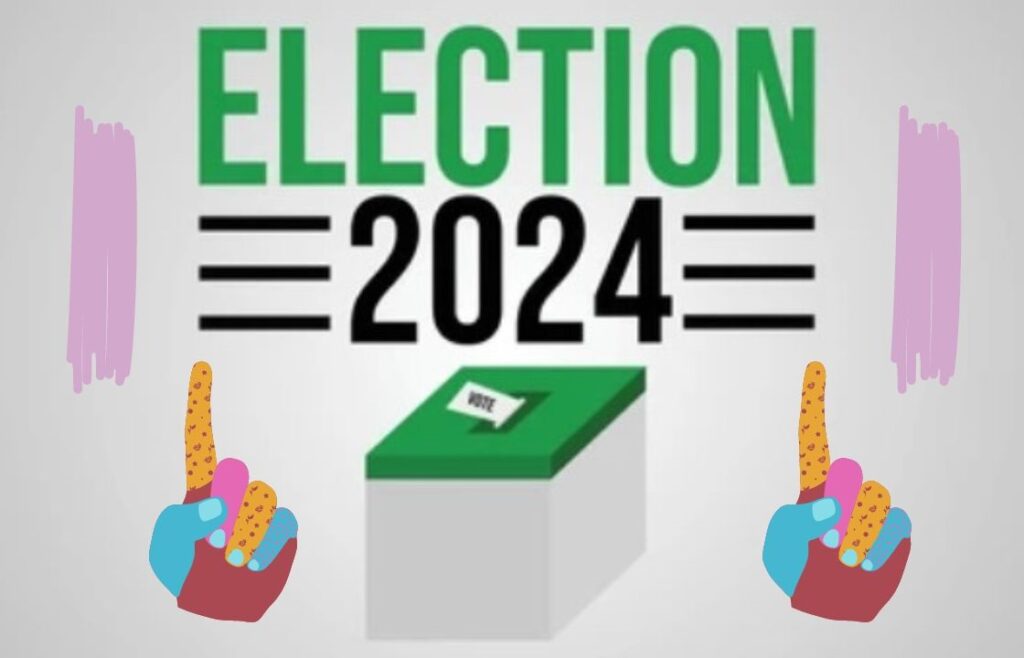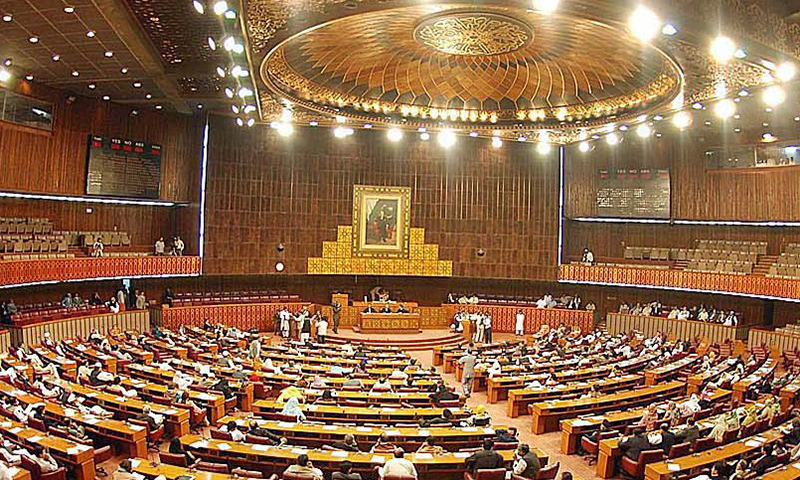The American people have again elected the controversial Donald Trump as their next president for another four-year term. He remained in power during 2017–2021.
The 2024 presidential election campaign was marked by significant debates between the candidates. Initially, President Joe Biden and former President Donald Trump faced off in their first debate in June 2024, which proved to be a contentious affair. During this debate, Trump aggressively challenged Biden on issues such as immigration and the economy, while Biden struggled at times to articulate his points clearly.
Following Biden’s unexpected withdrawal from the race shortly after the Republican convention, Vice President Kamala Harris stepped in as the Democratic nominee. Trump then expressed willingness to debate Harris multiple times, though he preferred not to do so on ABC as initially planned.
Throughout the debate season, Trump maintained his confrontational style, often redirecting conversations to his opponents’ perceived weaknesses and reiterating his claims about the 2020 election. His performance in these debates was generally seen as forceful and dominating, particularly when addressing issues like immigration and the economy, which resonated strongly with his base.
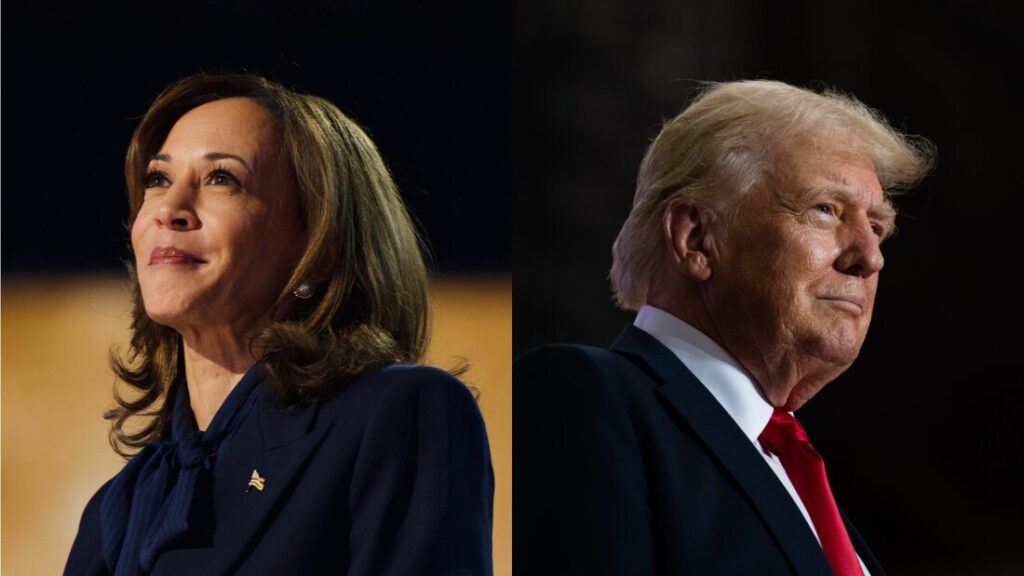
If re-elected, Donald Trump has outlined an ambitious and controversial agenda for his potential second term as president. His plans include implementing a massive deportation operation targeting millions of immigrants, both legal and illegal, which he describes as the “largest mass deportation programme in history.”.
Trump also intends to reinstate and expand his first-term policies, such as the “Remain in Mexico” initiative and travel restrictions on certain predominantly Muslim countries. On the economic front, he promises to extend and expand the tax cuts from his 2017 Tax Cuts and Jobs Act, proposing to reduce the corporate tax rate to 15% for companies that manufacture in the U.S.
Trump has also pledged to rescind Biden’s tax hikes, tackle inflation, and end what he calls Biden’s “war” on American energy production. Additionally, he plans to significantly expand presidential powers, potentially allowing for the dismissal of thousands of federal employees and replacing them with political loyalists.
This expansion of executive authority would be based on a controversial interpretation of the Constitution known as the unitary executive theory. Trump’s agenda also includes a focus on deregulation, particularly in the energy sector, and a more isolationist approach to foreign policy.
Resilience Amid Assassination Attempts During 2024 Campaign
During the 2024 election campaign, Donald Trump survived two assassination attempts, highlighting the heightened tensions and security concerns surrounding the controversial candidate.
The first attempt occurred in July 2024 at an outdoor rally in Pennsylvania, where dramatic photos emerged of a bloodied but defiant Trump surviving the attack. This incident led to a small increase in Trump’s favorability ratings and projected vote share.
A second assassination attempt took place in September 2024 at Trump’s golf course in Florida, where a potential shooter was apprehended after lying in wait for nearly 12 hours. These incidents raised further concerns about the future of American politics and the safety of presidential candidates.
While the first attempt seemed to provide a small but persistent boost to Trump’s campaign, the political impact of the second attempt was less clear, as it occurred in a different context when Trump’s momentum had shifted following a debate loss to Kamala Harris.
The Trump Phenomenon: A Journey from Manhattan Towers to American Politics
From the gleaming heights of Trump Tower to the corridors of the White House, Donald Trump’s journey represents one of the most remarkable political stories in American history. Love him or loathe him, few can deny the indelible mark he’s left on the American political landscape.
On a warm June day in 1946, in the bustling borough of Queens, New York, Fred and Mary Trump welcomed their fourth child, Donald John Trump. Born into real estate royalty, young Donald watched his father transform the outer boroughs’ skyline, one apartment building at a time. It was a lesson in empire-building that would shape his future.
“My father was my inspiration,” Trump would later write in his bestseller “The Art of the Deal.” But while Fred Trump built solid middle-class housing in Brooklyn and Queens, his son’s ambitions stretched towards the glittering spires of Manhattan.
The 1970s saw Trump make his bold move into Manhattan real estate. While New York City teetered on bankruptcy, the young developer saw an opportunity. The transformation of the decrepit Commodore Hotel into the gleaming Grand Hyatt marked his arrival on the big stage. But it was Trump Tower, completed in 1983, that became his masterpiece—a 68-story statement of brass-and-glass ambition that would define his brand.
“Everything I touched turned to gold,” Trump famously declared. Yet beneath the golden veneer lay a more complex reality. The 1990s brought casino bankruptcies in Atlantic City, revealing the first cracks in the seemingly impregnable Trump facade.
When “The Apprentice” premiered in 2004, it introduced Trump to a new generation. Each week, millions watched as he delivered his catchphrase: “You’re fired!” The show didn’t just boost ratings; it reinvented Trump for the digital age.
“Television made me a different kind of celebrity,” Trump would later reflect. “Business magazines had covered me for years, but now people knew my face, my gestures, my attitude.”
The Political Earthquake
June 16, 2015: Trump descends the escalator at Trump Tower to announce his presidential bid. The media treated it as entertainment – another Trump spectacle. But something different was happening. His “Make America Great Again” message struck a chord with voters feeling left behind by globalization and technological change.
“The forgotten men and women of our country will be forgotten no longer,” Trump declared in his inaugural address. His presidency would prove as unconventional as his campaign.
The Trump administration moved at breakneck speed. Tax cuts, deregulation, judicial appointments—the changes came rapidly. On the international stage, he upended diplomatic norms, meeting North Korea’s Kim Jong Un and withdrawing from the Paris Climate Accord.
But controversy was never far away. The Mueller investigation into Russian interference cast a shadow over his first two years. His first impeachment, centred on a phone call with Ukraine’s president, exposed deep partisan divisions.
Then came 2020 and COVID-19. As the virus spread, Trump’s handling of the pandemic became a central election issue. “We have it totally under control,” he assured in January 2020. By year’s end, the pandemic had claimed hundreds of thousands of American lives and transformed the political landscape.
The 2020 election’s aftermath wrote a controversial new chapter in American democracy. Trump’s refusal to concede, the January 6th Capitol events, and his second impeachment created unprecedented challenges to democratic institutions.
Post-presidency, Trump faces multiple legal challenges across various jurisdictions. Yet his influence over the Republican Party remains strong, with many candidates seeking his endorsement and adopting his political style.
The Trump Effect
Trump’s impact extends far beyond policy. He’s transformed political communication, bypassing traditional media through social media. His combative style has reshaped public discourse, while his “America First” doctrine has influenced both domestic and foreign policy thinking.
“Before Trump, politicians talked about change. Trump disrupted the system,” notes one political analyst. Whether that disruption represents renewal or decay remains fiercely debated.
Trump’s supporters see him as a necessary disruptor who challenged establishment politics and prioritised American interests. His critics view him as a threat to democratic norms and institutions. Both perspectives acknowledge his transformative impact on American politics.
The Trump era has exposed deep divisions in American society—between rural and urban, college-educated and working-class, globalist and nationalist. These fault lines, while not created by Trump, have deepened during his political career.
The Continuing Story
Today, Trump remains a central figure in American politics. His legal challenges make headlines, his statements drive news cycles, and his influence shapes Republican politics. Love him or hate him, the Trump phenomenon continues to define much of American political discourse.
As one historian noted, “Whatever the future holds, the Trump presidency will be studied for generations to come. It represents a unique moment in American history—when a businessman-turned-reality TV star reshaped the country’s political landscape.”
The ultimate impact of the Trump era on American democracy, political institutions, and social fabric remains to be fully understood. But one thing is certain: Donald Trump has left an indelible mark on American history, one that will be debated and analyzed for decades to come.
In the ever-evolving story of American democracy, the Trump chapter remains unfinished. As the nation moves forward, his influence continues to reverberate through the halls of power and the hearts of millions of Americans, supporters and opponents alike.
Trump’s Global Impact: Reshaping International Relations During His Presidency
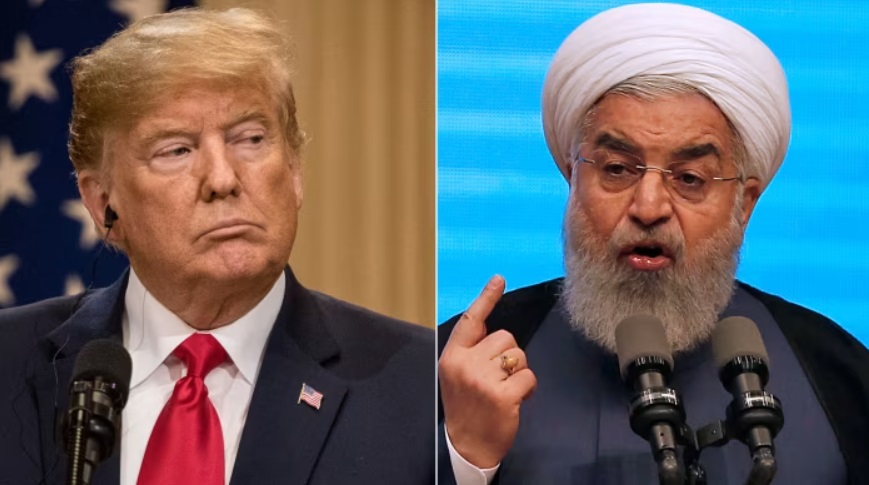
Donald Trump’s “America First” approach fundamentally altered global diplomacy and international relationships. His most significant foreign policy decision came in May 2018 when he withdrew the United States from the Joint Comprehensive Plan of Action (JCPOA), commonly known as the Iran Nuclear Deal. This withdrawal led to renewed tensions in the Middle East and strained relationships with European allies who remained committed to the agreement.
Beyond the Iran deal, Trump’s presidency marked several pivotal shifts in global politics:
The US-China relationship underwent a dramatic transformation with the initiation of a trade war, implementing substantial tariffs on Chinese goods. This economic confrontation rippled through global markets and supply chains.
Trump’s approach to NATO challenged traditional alliances, as he repeatedly criticised European members for not meeting their defence spending commitments. This stance created uncertainty about America’s commitment to collective defence.
In the Middle East, Trump brokered the Abraham Accords, facilitating normalisation agreements between Israel and several Arab states—a significant diplomatic achievement that altered regional dynamics.
His administration’s hardline stance on immigration, including the construction of the border wall and the “Remain in Mexico” policy, influenced global discussions on migration and border security.
The withdrawal from the Paris Climate Agreement signalled a major shift in global environmental cooperation, though this decision was later reversed by his successor.
These policies collectively represented a departure from post-World War II international consensus, emphasising bilateral deals over multilateral agreements and challenging established global institutions.
Image Source: here

